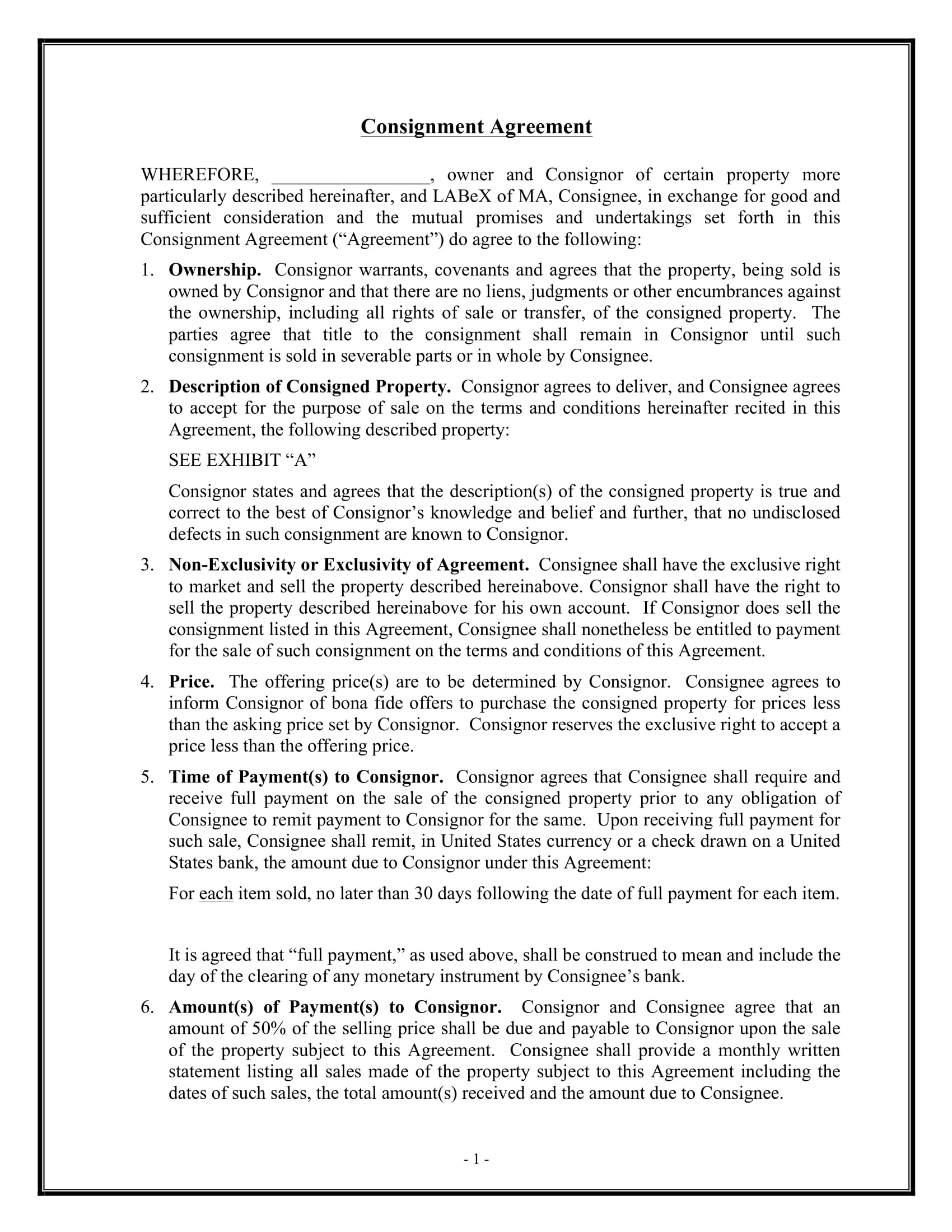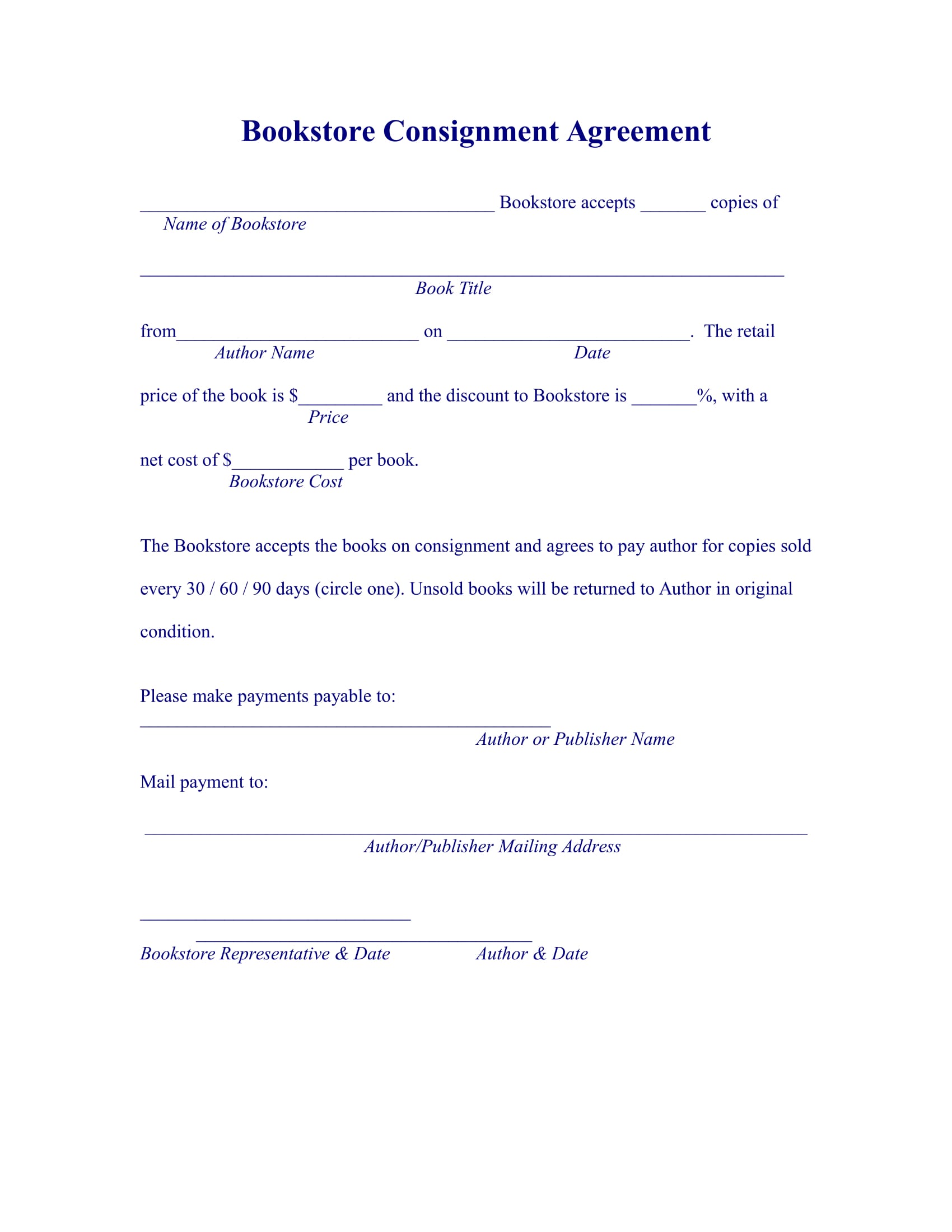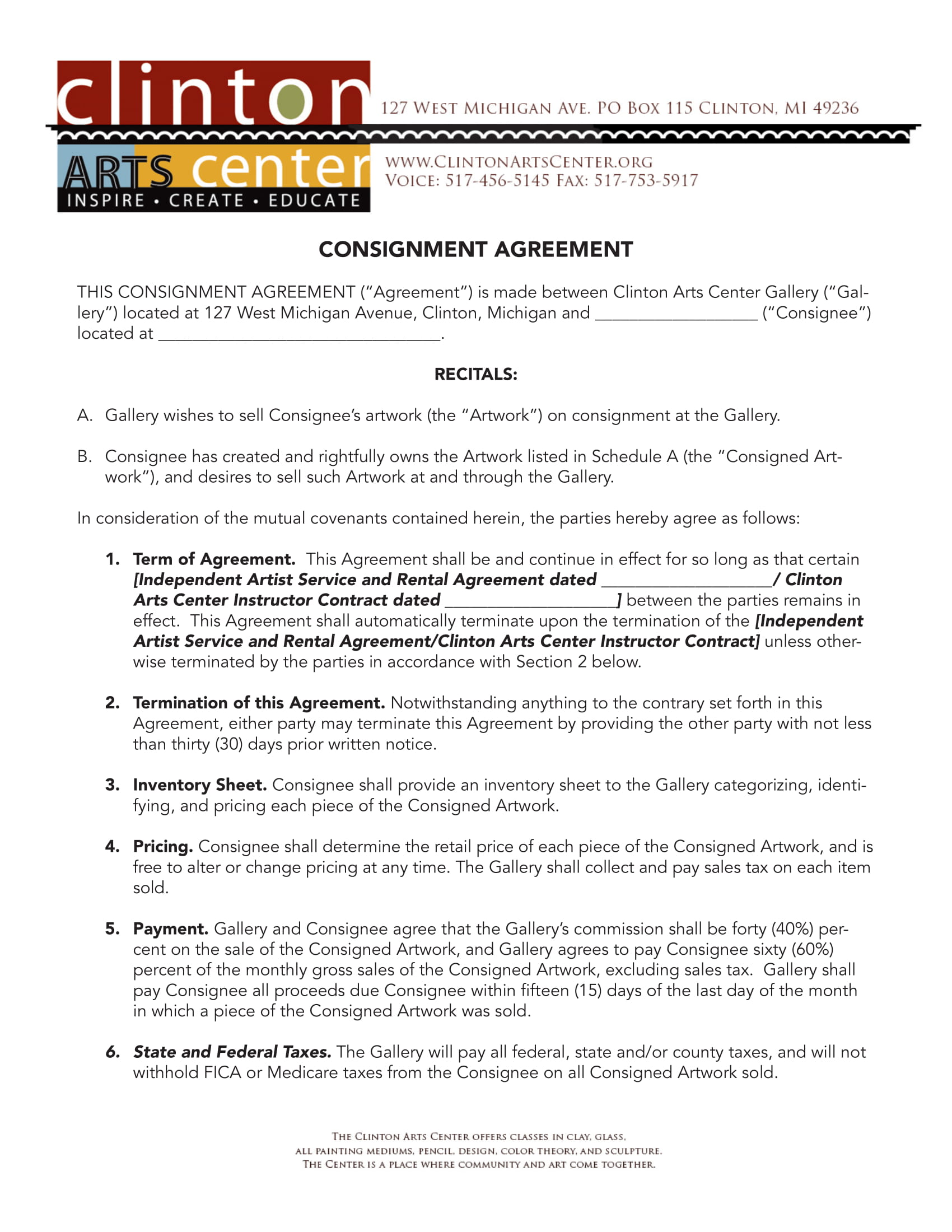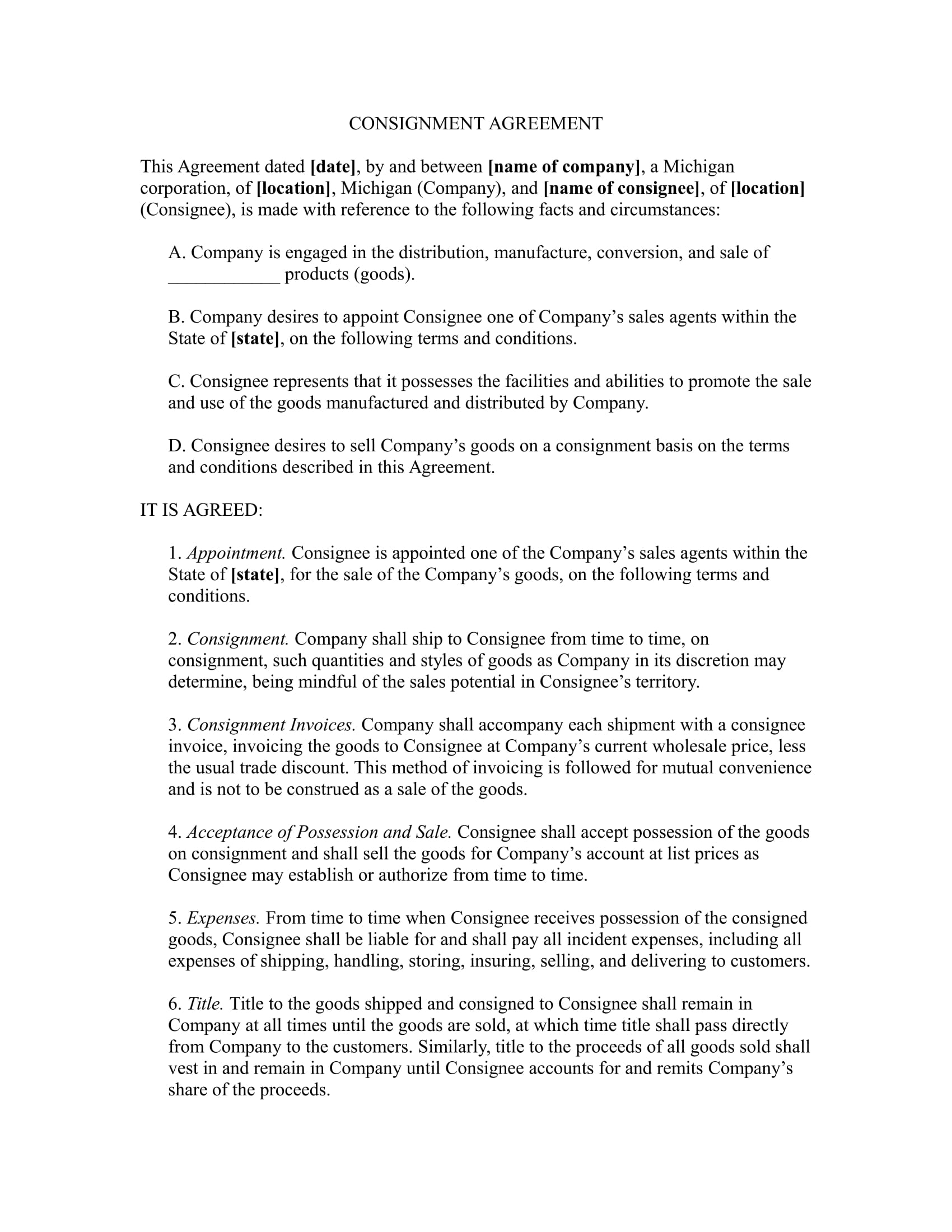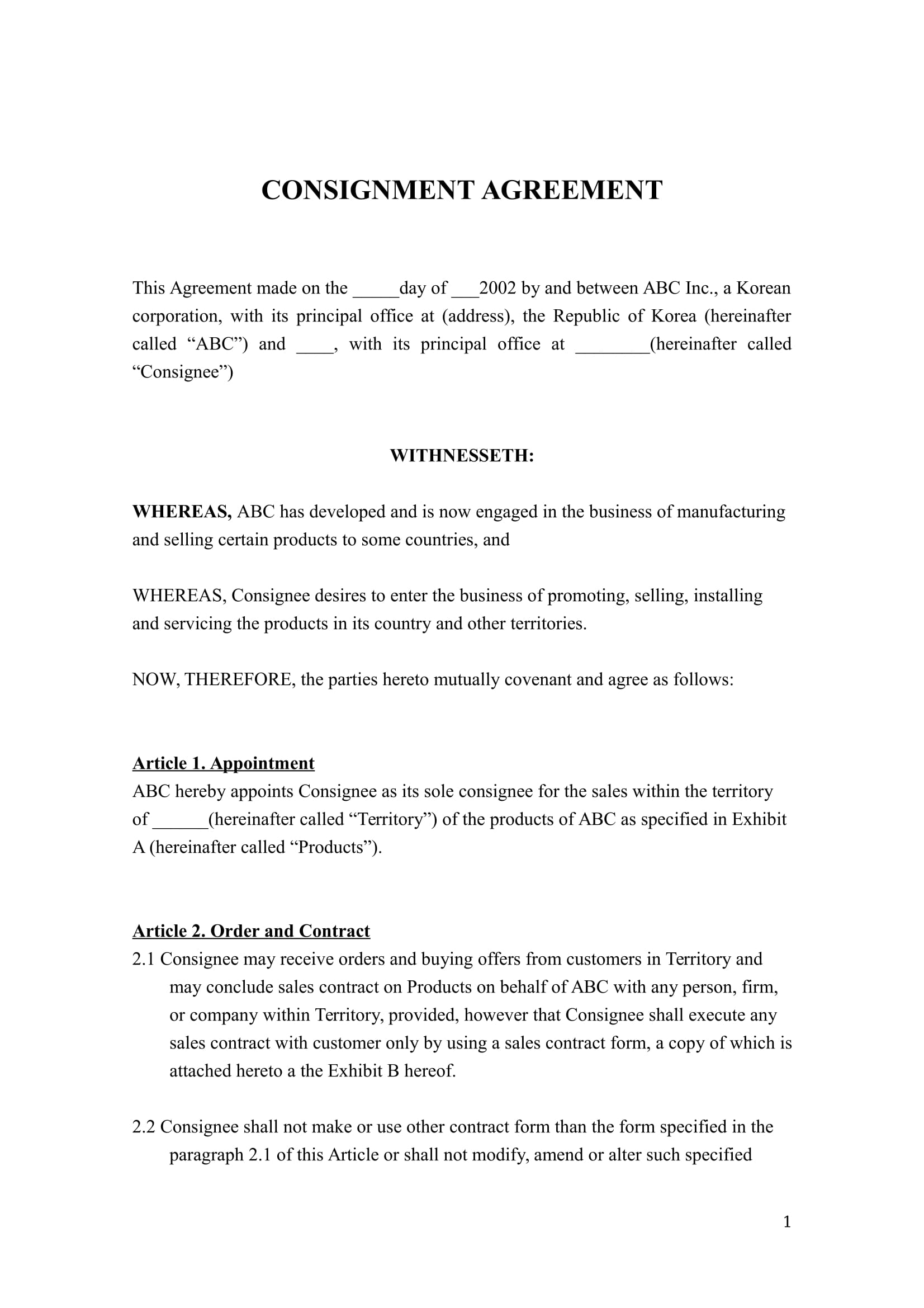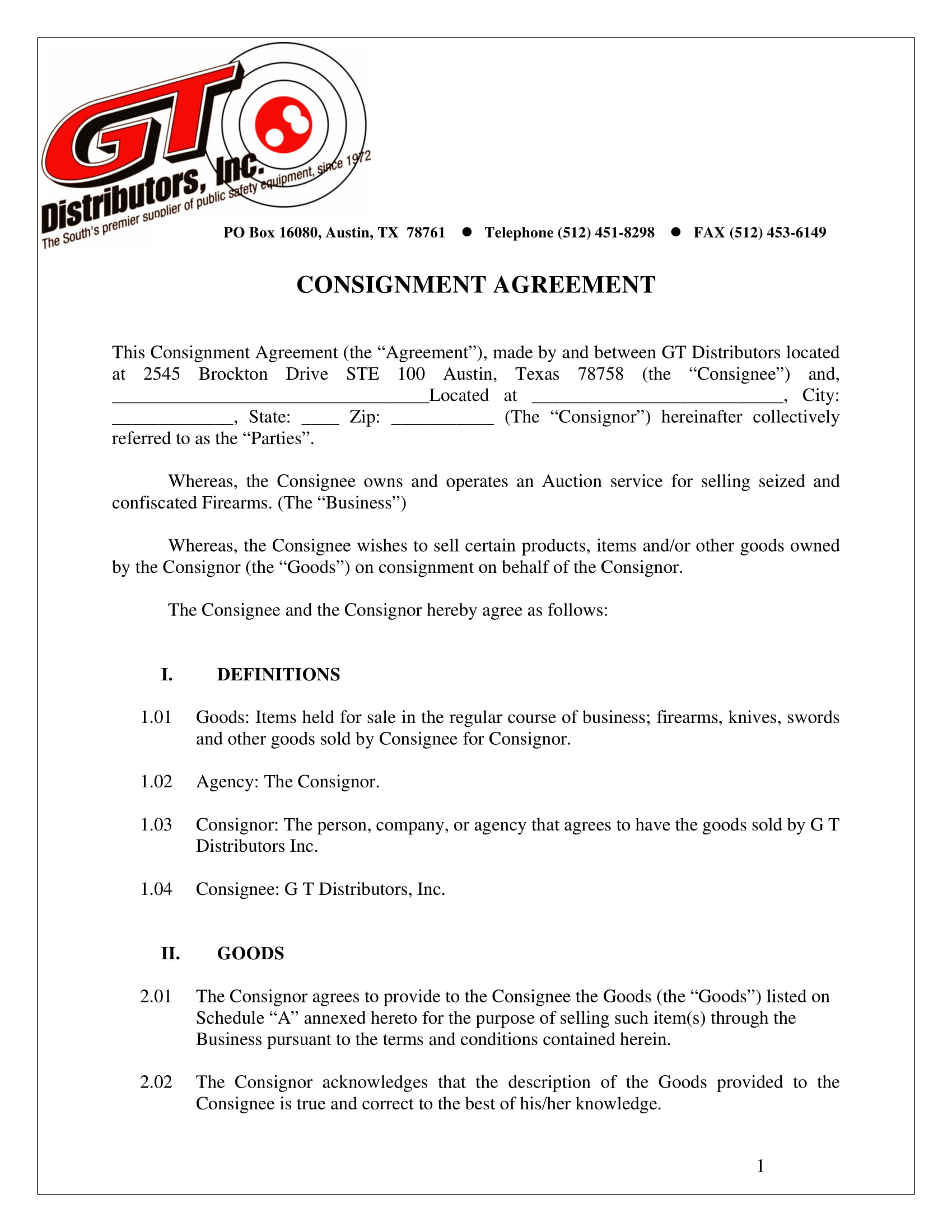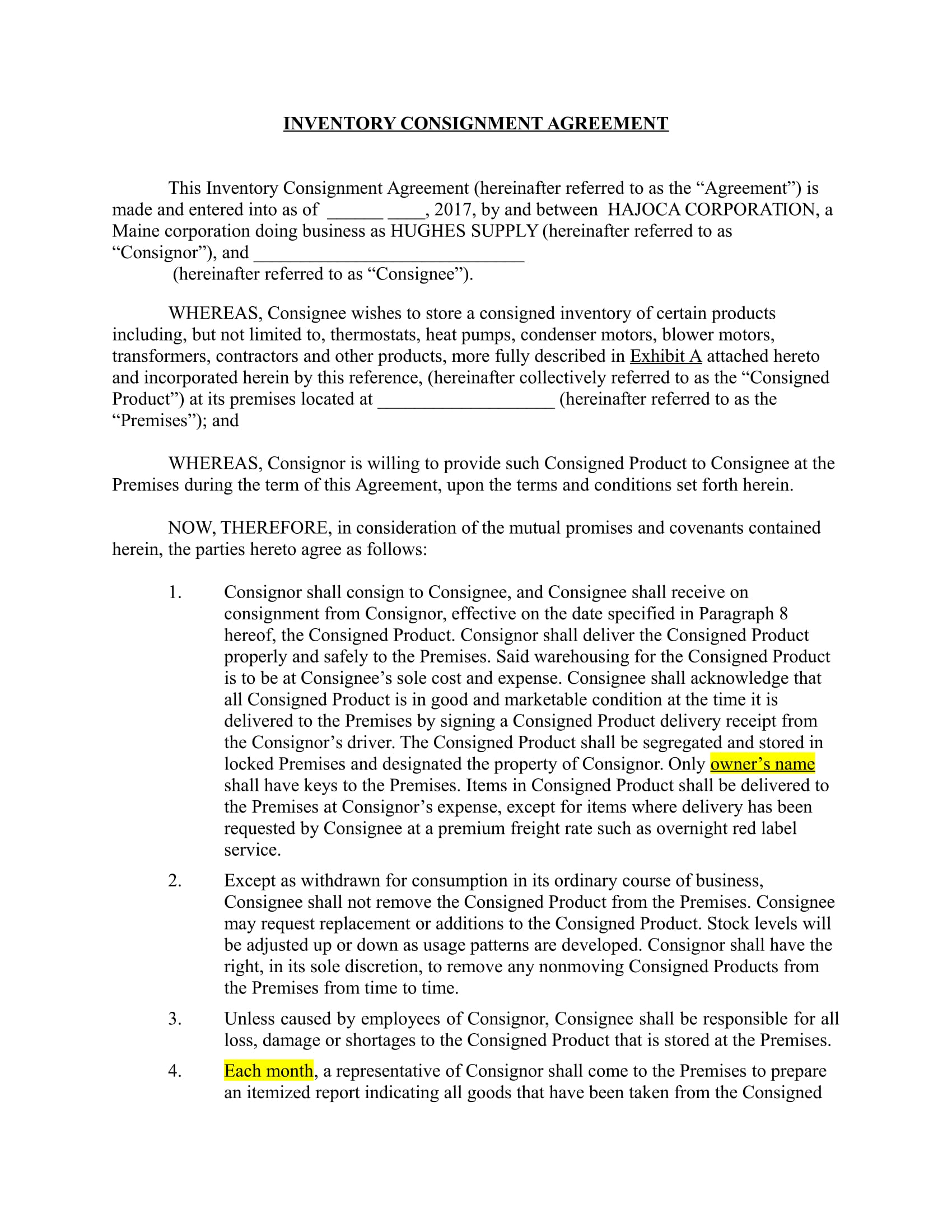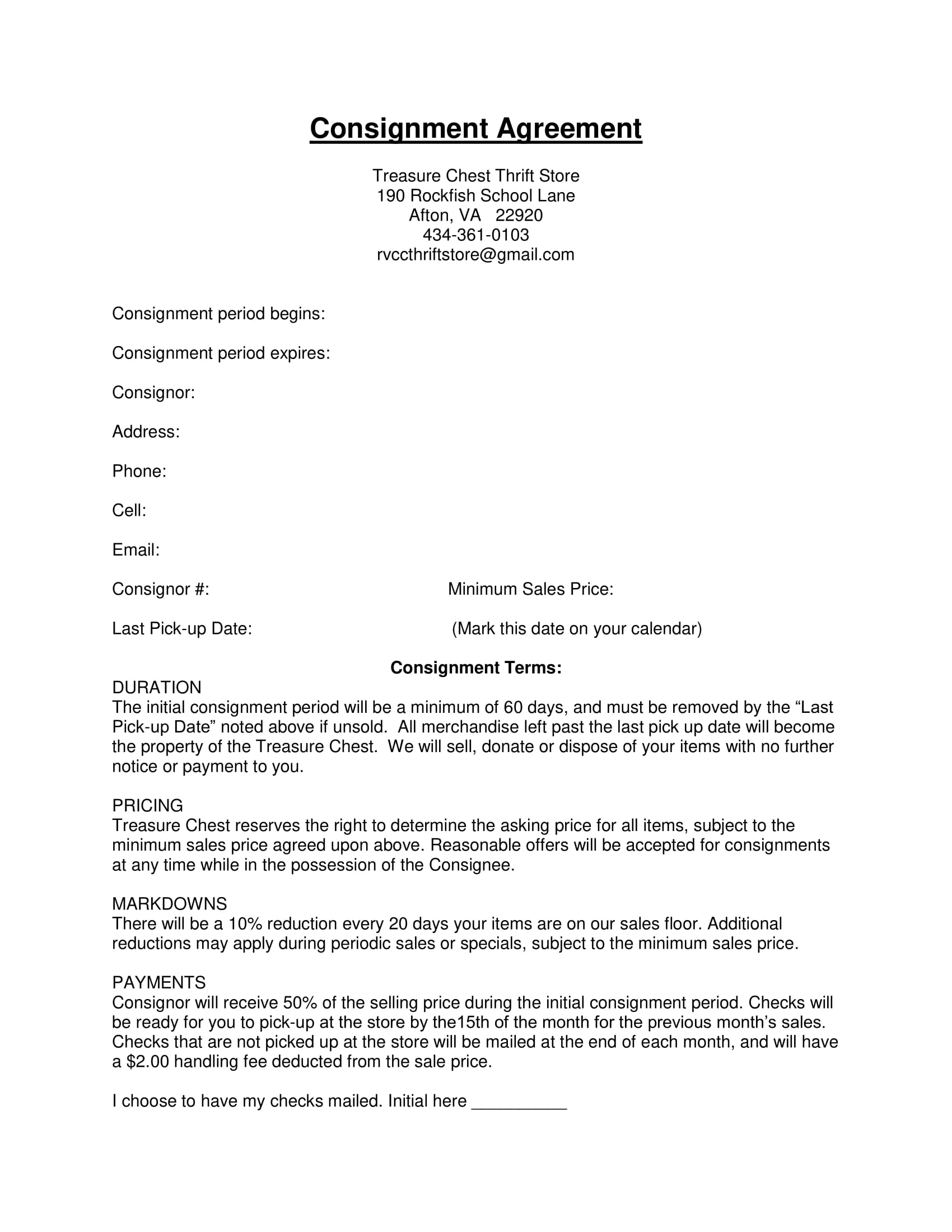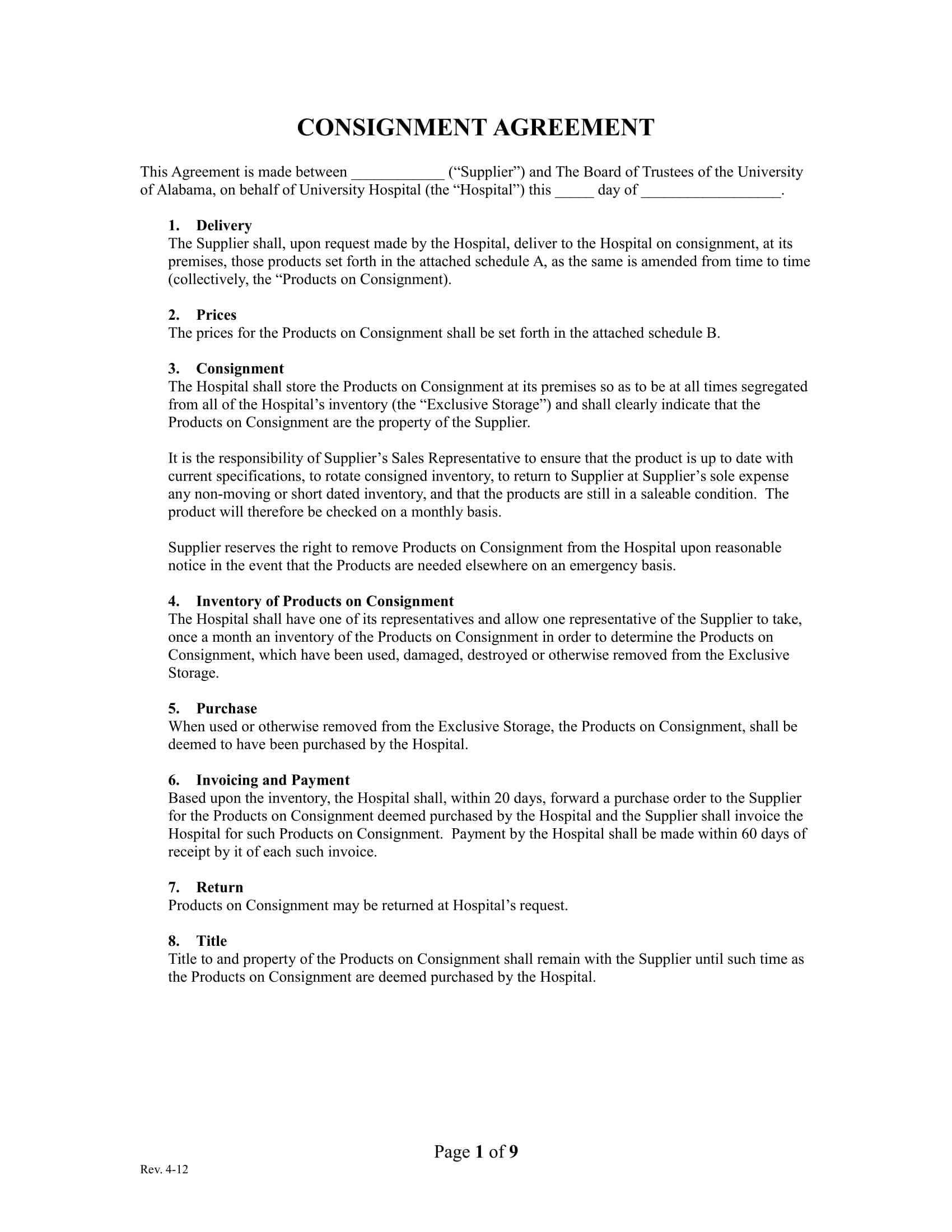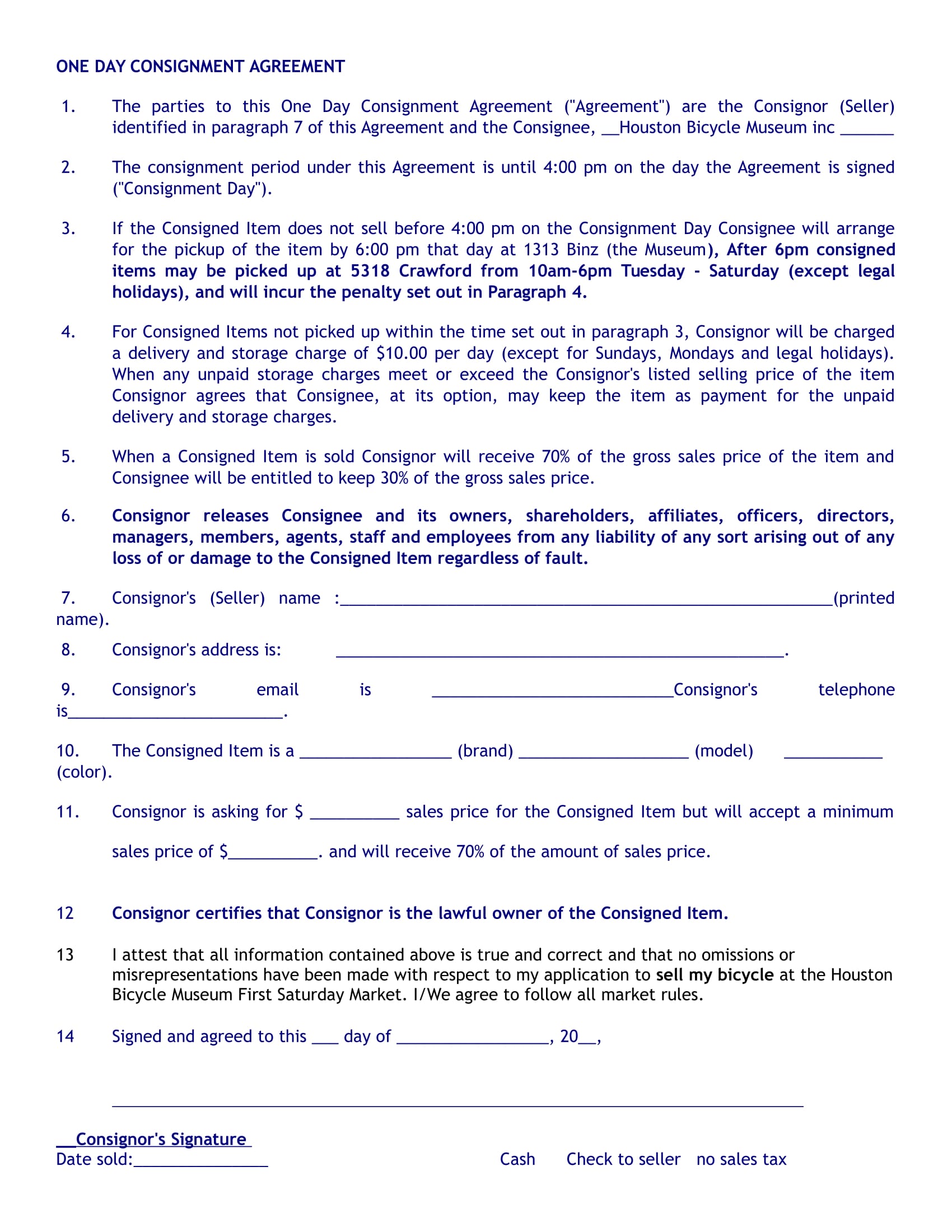16+ Consignment Agreement Examples
As a creator or art or any products that can be sold in the market you need to make sure that some terms you want to be implemented are heard and followed by a willing reseller or distributor. Although the moment you hand over the product to the reseller, you absolve your right as the original creator, but that should not be the case. You may also see management agreement examples & samples.
By setting up terms and conditions, not only will you get credit for the product, you may also gain a portion of the earnings depending on the conditions you have set prior to the bargain. But how do you outline these terms?
A consignment agreement is between the consignee and and consignor for the storage, transfer, sale or resale and use of a product. The consignee may take products from a designated consignment stock for use or resale, depending on what has been agreed. He/She pays for the products to the consignor in accordance to the terms set in a consignment agreement.
Consignment Agreement

Simple Consignment Agreement Example
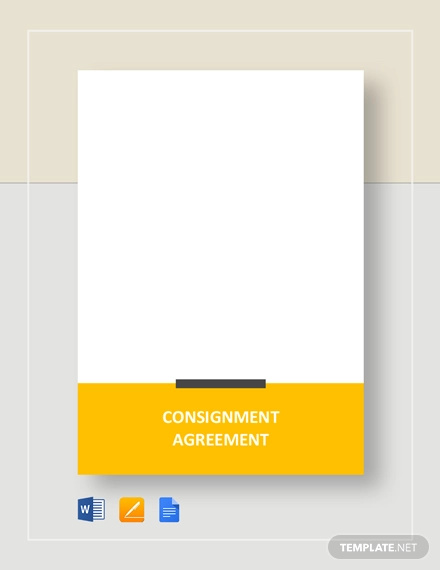
Artist Consignment Agreement
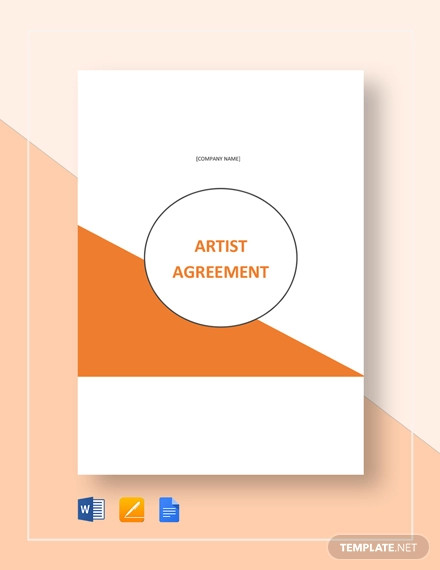
Basic Consignment Agreement Example
Bookstore Consignment Agreement Example
The consignee merely acts as an agent for the consignor to sell, store, transfer, etc. of the products. Normally, the unsold or unused products are returned by the consignee to the consignor.
In simpler terms, a consignment agreement is entered into where one party supplies the products to another for the purpose of selling, storage, transfer, and so on. The provider (consignor) still holds ownership of these products until they are rightfully sold, however, must remain in the possession of the consignee in order to sell or to carry out whatever the primary order of business that both parties has agreed on. You may also see key differences between agreements and contracts.
For example, when an artist has an arrangement with a gallery, the artist becomes the consignor and the gallery becomes the consignee. So long as the art is not yet sold, the ownership remains with the consignor. Although the gallery (consignee) has the capacity to transfer the ownership from the consignor to the consumer. You may also like partnership agreement examples & samples.
Generally, companies or individuals enter into a consignment agreement in order to ensure that the products retain their ownership even though it is being sold by a third party or a consignee. This is normally due to the high stakes or value involving such transactions.
The consignor is unwilling to sell the product to the consignee on an invoice basis maybe because the consignee may not be in the position to pay for the product until it is sold to the consumer. Therefore, it helps protect the right of the consignor to retain the ownership of the product and also to regain possession of the product should it be needed. You may also check out how to write a separation agreement.
Difference Between Consignor and Consignee
In order to fully understand how a consignment agreement works, you also need to understand the difference between a consignor and a consignee. You need to carefully examine and understand their individual functions and how thy correlate with each other. That way, when you enter into this kind of agreement, you have prior knowledge about things should work. Listed below are some of the differences between a consignor and a consignee:
1. A consignor is usually the owner and shipper of the goods, whereas a consignee is the person for whom the shipment is consigned. You may also see service agreement examples.
2. In layman’s term, a consignor or shipper is the sender of the goods, while the consignee it the receiver of the goods.
3. By definition relating to contract of carriage, a consignor is the person sending the shipment in whatever mode of shipment; a consignee is the person to whom the shipment is going to be delivered to. You may also like what is a business agreement?
4. Simply put, the consignor is the sender and the consignee is the receiver of goods.
5. The consignor, is be the seller or owner of the goods, while the consignee is the buyer or an agent that acts on behalf of the consignor.
6. Ownership of the goods is retained by the consignor until the consignee buy or sells the goods in behalf of the consignor.
Therefore, the consignor is the original creator, owner or sender of the goods to be sold in the market. On the other hand, the consignee is buyer, reselling agent or receiver of the goods from the consignor. To put things into perspective, a consignee is commonly referred to as the third party that helps the consignor sell his/her original work or goods. You may also check out sales agreement samples.
Art Work Consignment Agreement Example
Consignment Agreement Example
Inventory and Purchasing Consignment Agreement Example
Contents of a Consignment Agreement
In order to make everything smooth and sailing between the consignor and consignee, a consignment agreement must effectively outline all the necessary information needed for the transaction. Here are some of the major contents that should be found in a consignment agreement:
1. Information About Involved Parties
This is the most basic yet the most important information that should be included in the agreement. It includes the name and contact information of the consignor and consignee. It should also be specified which among the parties involved are the “principal” or “consignor,” the party providing the goods or merchandise, and which is the”consignee” or the person in charge of receiving and distributing it. You may also see business agreement letter examples.
This should be laid out and made clear on the first part of the agreement in order to clearly state identify which is which and who is who.
2. Recitals
This part of the general agreement discusses the specific roles played out by both parties. This part should clearly identify the boundaries on the role or part in which the two parties will take. It should be establish with the help of these few basic principles:
- who or what (type of business, etc.) the principal party is
- what the principal is expecting to gain by way of the consignment agreement
- what are the formal responsibilities of the consignee to the principal as determined by the agreement
3. Exclusive Appointment
This section should clearly state the rights that the consignee gains from the agreement. It should be stated that the consignee has the legal and exclusive rights to sell and distribute the goods or merchandise. It should be made clear by the consignor that through the effectivity of the consignment agreement, the consignee has gained the exclusive rights on the distribution of the designated materials. You may also like roommate agreement examples.
4. Details of Merchandise Handling
This section can be divided into several sub-section since it discusses the technicalities involving how the goods or merchandise should be delivered and other aspects concerning such matter.
This section should clearly and effectively cover the rules on how and when the goods or merchandise should be delivered, who is responsible to pay to fro the fees and liabilities, for example: the consignor may take the part of paying the shipping fee but will not be held accountable for the damage incurred during the process and that the consignee must take take the responsibility for such damages. You may also check out how to write sponsorship agreements.
It also needs to cover the rules of selling the goods or merchandise, for instance, the consignor has the say on the prices of the goods or merchandise and that the consignee should only be paid by the buyer in cash up front. In addition, it also include a general statement determining the ownership or title of the unsold ,goods or merchandise belongs to, most commonly, it is still with the principal or consignor.
5. Details of Employee Benefit Payments
This section of the agreement states which party is responsible for supporting, training and directing employees involved in the selling procedure of the goods or merchandise.
It should be made clear who provides for the compensation and direction needed to be taken by the employees in selling the goods and merchandise. This usually falls on the consignees roles and responsibilities, but still should be stated directly. This section basically absolves the consignor from all the liabilities involved in the selling and distribution of the goods or merchandise. You might be interested in how to utilize rental agreement templates as a landlord.
6. Enforcement Details
This section should be the final and concluding section found in the agreement. It should include the details pertaining to the termination terms, dispute arbitration, the law governing the agreement and the rules needed to be followed in order to modify the commercial agreement.
Korean Products Consignment Agreement Example
Firearms Selling Consignment Agreement Example
Consignment Agreement Example
Instrument Seller Consignment Agreement Example
Inventory Consignment Agreement Example
Thrift Store Consignment Agreement Example
Hospital Consignment Agreement Example
Vehicle Consignment Agreement Example
One Day Consignment Agreement Example
Conclusion
A consignment agreement makes all the verbal business agreements between two or more parties legal and legitimate. If you plan on plunging on a business agreement with other companies or individuals with the use of your own model, goods, products or merchandise, it is advised that you make use of a consignment agreement before you dive head first to the agreement. You may also see marketing agreement templates and examples.
Not only will this help make things professional and official, it can also help you protect your rights as the rightful owner of the goods or merchandise. It can also help you maintain a professional relationship with your partner or consignee during such tedious process.
Although it requires you to put in more work, it can help you set the terms and conditions that legally does not hurt your nor the consignee. It helps you outline the boundaries and other rules the consignee must adhere to as your agent or third party in selling your original work. Not only that, it can help you retain ownership of your goods or merchandise. You may also like purchase agreement examples.
The agreement will clear things up regarding the ownership of the goods or merchandise before and after a sale is made by the consignee in behalf of the principal or consignor.



